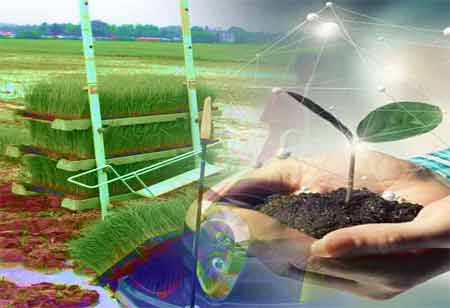Thank you for Subscribing to Food Business Review Weekly Brief
Using AI to Safeguard Fine Wines
The intricate and lucrative world of wine attracts connoisseurs and collectors searching for rare and exquisite bottles

By
Food Business Review | Wednesday, April 03, 2024
Stay ahead of the industry with exclusive feature stories on the top companies, expert insights and the latest news delivered straight to your inbox. Subscribe today.

AI-driven advancements revolutionise wine fraud detection, safeguarding authenticity. By leveraging AI's analytical power, stakeholders mitigate counterfeit risks, ensuring consumer trust in the industry's integrity.
FREMONT, CA: The intricate and lucrative world of wine attracts connoisseurs and collectors searching for rare and exquisite bottles, yet it also faces the persistent threat of fraud. Counterfeiters have plagued the industry for decades, undermining trust and threatening the market's integrity. Artificial intelligence (AI) advancements are transforming wine fraud detection, offering sophisticated solutions to combat this pervasive problem.
Wine fraud encompasses deceptive practices, including counterfeiting rare or prestigious bottles, mislabeling, diluting inferior wine, and even chemical adulteration. These fraudulent activities deceive consumers and harm producers, distributors, and the industry's reputation. Traditional fraud detection methods, such as chemical analysis and visual inspection, are often limited in effectiveness and efficiency.
The Role of AI in Wine Fraud Detection
AI technologies, including machine learning and data analytics, have emerged as powerful tools in the fight against wine fraud. By leveraging vast data, AI algorithms identify patterns, anomalies, and inconsistencies that indicate fraudulent activity. From analysing bottle labels and packaging to scrutinising chemical compositions and historical seal data, AI provides insights that surpass human capabilities.
Label and Packaging Analysis
AI demonstrates notable proficiency in analysing labels and packaging in wine fraud detection. Counterfeiters often need help replicating intricate details and security features on authentic labels. AI algorithms compare digital images of labels against a database of known authentic labels, flagging discrepancies or irregularities that may indicate forgery. Additionally, AI analyses packaging materials, such as bottles, corks, and capsules, to detect inconsistencies that suggest counterfeit production.
Chemical Composition Analysis
Another crucial aspect of wine fraud detection is the analysis of chemical compositions. Authentic wine has distinct chemical profiles that result from factors such as grape variety, terroir, and production methods. By employing spectroscopy and chromatography techniques, AI systems can analyse the chemical makeup of wines with unparalleled precision. Any deviations from expected profiles may signal adulteration or counterfeiting, prompting further investigation.
Sales and Market Data Analysis
AI-driven fraud detection extends beyond the physical characteristics of wine to encompass sales and market data. AI algorithms identify suspicious patterns indicative of fraudulent activities by analysing historical sales trends, pricing dynamics, and transactional data across multiple channels. For instance, sudden fluctuations in pricing or unusual spikes in sales volume signal the presence of counterfeit products entering the market.
Integration with Blockchain Technology
In recent years, integrating AI with blockchain technology has further enhanced wine fraud detection capabilities. Blockchain provides a decentralised and immutable ledger that records every transaction along the supply chain, from grape cultivation to bottle distribution. By combining AI's analytical capabilities with blockchain's transparency and traceability, stakeholders verify the authenticity and provenance of each bottle, reducing the risk of fraud at every stage.
While AI holds tremendous promise in the fight against wine fraud, several challenges remain to be addressed. These include the need for standardised data collection and sharing protocols, developing robust authentication algorithms, and integrating AI systems with existing regulatory frameworks. Furthermore, ongoing research and collaboration between industry stakeholders, technology providers, and regulatory bodies are essential to stay ahead of evolving fraud tactics and ensure the long-term integrity of the wine market.
Advancements in AI-driven technologies are transforming the landscape of wine fraud detection, offering innovative solutions to safeguard the authenticity and integrity of fine wines. By harnessing AI's analytical power, stakeholders can mitigate the risks posed by counterfeiters and uphold the industry's reputation. As AI continues to evolve and integrate with other technologies, the future of wine fraud detection looks increasingly promising, ensuring consumers enjoy their favourite wines confidently and trust.






